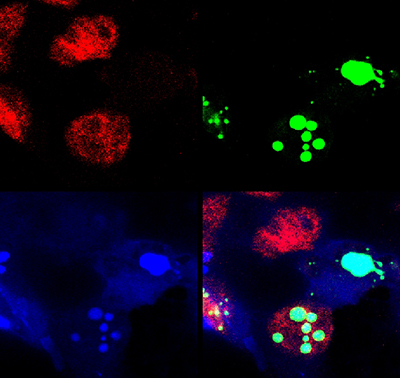Research
The Denning Ataxia Center's conducts both basic science and clinical research aimed at improving the understanding of ataxia and developing new treatment options. Our efforts focus on uncovering the genetic mechanisms behind hereditary forms of ataxia, with the goal of identifying potential therapeutic targets.
Research on Polyglutamine Disorders: Spinocerebellar Ataxias and Related Syndromes

Spinocerebellar Ataxia Type 1 (SCA1), a degenerative disease that affects cerebellar Purkinje cells and brainstem neurons, is caused by a polyglutamine expansion in the involved disease protein. In this respect it is similar to agrowing number of disorders including Huntington disease that share a similar mutational mechanism. Patients with SCA1 begin to display cerebellar signs characterized by motor incoordination or ataxia in early to mid-adulthood that unfortunately progresses to more vital structures of the brain including the brainstem. Our working hypothesis is that ataxin-1 – the protein that carries the polyglutamine expansion—misfolds, is poorly cleared by the cell, and its build up causes neuronal toxicity.
Current Projects
- Transcriptional hypothesis in SCA1 pathogenesis: One of the earliest features of this disease is a change in the gene expression signature within affected neurons. We are elucidating the pattern of gene expression changes in the vulnerable Purkinje cell population and identifying the contribution of these alterations to pathology.
- The role of the vascular and angiogenic factor VEGF in SCA1 pathogenesis: One of the genes that we have already found to be down-regulated is the neurotrophic and angiogenic factor VEGF. Importantly, we have discovered that genetic or pharmacologic replenishment of VEGF mitigates SCA1 pathogenesis. These results suggest a novel therapeutic strategy for this incurable disease, as well as the possibility of cross-talk between the degenerating cerebellum and its microvasculature that we will now test experimentally. We are also extending our study more broadly to address the role of endothelial and glial pathology in SCA1.
- The role of ataxin-1 misfolding and clearance in disease pathogenesis: We are testing different strategies to decrease ataxin-1 levels and promote its clearance.
- Research on genetic parkinsonian and dystonic syndromes: In addition to work on spinocerebellar ataxia, we have also initiated projects in order to shed light on genetic parkinsonian and dystonic syndromes.